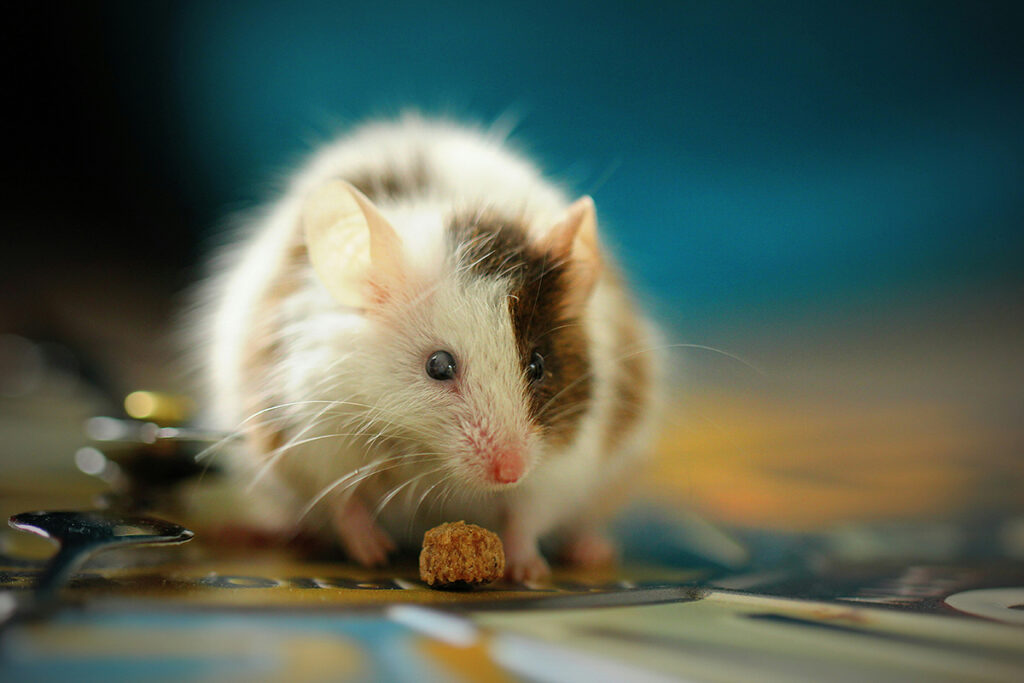Numerous studies have shown that intermittent fasting improves metabolism and immunity. Experiments on rodents have been crucial in understanding the biochemical processes underlying these beneficial effects. However, these experiments have primarily focused on males, limiting our understanding of how gender influences the impact of intermittent fasting. To expand this knowledge, an international team of scientists compared the biochemical processes in male and female mice subjected to alternate-day fasting.
Study Design:
Male and female mice were subjected to alternate-day fasting for two weeks: one day of ad libitum feeding followed by one day of fasting. After two weeks, researchers measured gene activity and the quantitative content of corresponding proteins in the animals’ liver cells. Various groups of mice were involved in the experiments:
- Wild-type mice
- Laboratory mice with identical genetic backgrounds and fully sequenced genomes
- Genetically modified mice with innate immune deficits
- Castrated males to study the influence of testosterone on innate immunity
- Ovariectomized females to evaluate the impact of estrogen on immune responses
- Identical groups of mice housed in different locations (Australia and France) under similar conditions
Some animals were also administered viral mimetics to evaluate the role of alternate-day fasting in immune responses during infectious diseases.
Intermittent Fasting Improves Body Weight and Fat Percentage
Alternate-day fasting influenced the synthesis of approximately 5,500 proteins in liver cells of both genders, resulting in improved metabolic health and stimulated biochemical changes in the liver. Both males and females experienced similar changes in:
- Body weight
- Percentage of body fat
- Fasting glucose levels
- Plasma ketone levels
- Levels of non-esterified (free) fatty acids
However, significant differences were observed in gene activation and corresponding biochemical processes.
Changes in Energy Sources During Alternate-Day Fasting Depend on Gender
The experiment confirmed previous findings that fasting increases the expression of proteins involved in fatty acid oxidation in males. However, females exhibited a more significant increase in this process.
A reverse relationship was observed in the concentration of critical proteins necessary for fatty acid synthesis. While males showed increased levels, females demonstrated decreased levels.
Image source: https://www.cell.com/cell-reports/fulltext/S2211-1247(23)00570-3
Symbols on the graph:
- Male – males
- Female – females
- EODF – every-other-day fasting
- Adlib, AL – food without restrictions (ad libitum)
- Vertical scale – activated genes
The study also examined other vital biochemical processes influencing the body’s energy reserves. A heatmap analysis illustrated the activity of relevant genes for each metabolic pathway, including glycolysis, fatty acid synthesis, fatty acid oxidation, ketone synthesis, and cholesterol biosynthesis.
Image source: https://www.cell.com/cell-reports/fulltext/S2211-1247(23)00570-3
Gender significantly influences energy acquisition pathways during alternate-day fasting. For instance, males exhibited more enzymatic reactions for glucose breakdown, whereas females showed more remarkable ketone synthesis. This observation aligns with the lower levels of ketones in female blood, indicating active utilization of this energy source.
Previous research indicated that periodic fasting increases cholesterol synthesis in males. However, the current experiment revealed a more intense process in females.
Furthermore, males showed a more pronounced increase in enzymes involved in fatty acid synthesis, whereas females demonstrated more significant activity of proteins involved in lipid catabolism.
Researchers also noted increased levels of plasma apolipoproteins in both genders following alternate-day fasting. Apolipoproteins are crucial components of high-density lipoproteins responsible for removing cholesterol from blood vessel walls.
Image source: https://www.cell.com/cell-reports/fulltext/S2211-1247(23)00570-3
Changes in The Hormonal System During Intermittent Fasting are Linked to Gender
Adiponectin, a protein whose synthesis alters during alternate-day fasting, is produced by adipose tissue cells under the influence of insulin. Adiponectin regulates glucose levels and is necessary for fatty acid breakdown. Both genders experienced an increase in adiponectin levels due to intermittent fasting. Females subjected to alternate-day fasting exhibited significantly higher adiponectin levels than ad libitum-fed animals.
Image source: https://www.cell.com/cell-reports/fulltext/S2211-1247(23)00570-3
Hormonal Effects on Innate Immunity and Inflammation During Alternate-Day Fasting:
Intermittent fasting significantly impacts the innate immune system. Pro-inflammatory proteins, including complement proteins and serum amyloid proteins, were substantially reduced in both genders.
Image source: https://www.cell.com/cell-reports/fulltext/S2211-1247(23)00570-3
Unexpectedly, different reactions of the interferon system to alternate-day fasting were observed between males and females.
Interferons are signaling proteins of the innate immune system that activate antiviral defense mechanisms and facilitate interaction between innate and adaptive immunity. Interferons play a vital role in the body’s defense against bacteria, fungi, and cancer cells, regulate immune response strength, and influence aging.
Females subjected to alternate-day fasting exhibited more robust activation of genes stimulated by alpha interferon (IFN-α) than males.
Image source: https://www.cell.com/cell-reports/fulltext/S2211-1247(23)00570-3
Researchers evaluated how the body’s cell susceptibility to interferon molecules influences the effects of intermittent fasting. The experiment was conducted on two groups of mice: wild-type mice and genetically modified mice with immune deficits incapable of detecting alpha interferon signals. Both genders of wild-type mice exhibited the same gene activity levels stimulated by IFN-α, while immune-deficient mice showed a complete absence of gene activity, similar to castrated and ovariectomized animals. Scientists did not detect any other differences in gene activity and protein synthesis. Conclusion: Alpha interferon molecules must increase interferon-stimulated genes’ activation during alternate-day fasting.
In castrated males subjected to alternate-day fasting, there was additional gene activity stimulated by IFN-α, albeit not statistically significant. Conversely, castrated males exhibited significantly higher gene activity levels than non-castrated animals fed ad libitum. Castrated males had higher fat mass but similar fasting glucose levels. Additionally, under the influence of intermittent fasting, these animals showed increased levels of proteins involved in fatty acid oxidation and ketone synthesis. Conclusion: Castration renders the metabolic response of males to intermittent fasting similar to that of females.
Results after ovariectomy in females were more diverse than in males. As expected, levels of key interferon-stimulated proteins were reduced regardless of dietary patterns. However, gene activity was higher when females were subjected to alternate-day fasting. Conclusion: Estrogen promotes the synthesis of interferon-stimulated proteins but does not regulate the transmission of IFN-α signals.
Researchers assessed how intermittent fasting affects the mimicry of viral infection in both genders. In one scenario, mice were administered a viral envelope mimetic, and in another, a viral RNA mimetic (polyI:C). PolyI:C significantly reduced body temperature in ad libitum-fed mice, which did not occur in alternate-day fasting animals. Additionally, ad libitum-fed mice showed a more active synthesis of interferon-stimulated proteins upon polyI:C stimulation. However, no additional increase was observed in females subjected to alternate-day fasting. Scientists speculate that intermittent fasting in females during RNA mimicry does not induce additional activation of alpha interferon, as this signaling pathway is already maximally activated during alternate-day fasting. There were no noticeable differences in metabolic pathways during viral infection mimicry between both genders when one group ate ad libitum and the other fasted intermittently.
Significant metabolic changes were also observed in female subjects after ovariectomy. These females exhibited reduced fasting glucose levels and higher fasting insulin levels. Additionally, they experienced increased adipose tissue mass, akin to males. Moreover, among females subjected to intermittent fasting, cholesterol synthesis was substantially reduced compared to non-sterilized females.
Subsequently, researchers evaluated the impact of the environment on the transmission of alpha interferon signals during intermittent fasting. They compared mice with identical, fully deciphered genomes kept under similar conditions in laboratories in Australia and France. When subjected to intermittent fasting, mice housed in France exhibited lower synthesis of interferon-stimulated proteins compared to mice in Australia. Differences in metabolism were also observed. In females housed in France, there was a significant reduction in the production of enzymes for cholesterol synthesis, although the biochemistry of fatty acid oxidation remained unchanged.
Image source: https://www.cell.com/cell-reports/fulltext/S2211-1247(23)00570-3
In the final experiment, scientists assessed how intermittent fasting affected the simulation of viral infection in both sexes. In one scenario, mice were administered a viral envelope mimic (viral mimetic), while in the other, they were administered a viral RNA mimic (polyI:C). PolyI: C significantly reduced the temperature in freely-fed mice, whereas this effect was not observed in animals undergoing intermittent fasting. Moreover, there was a more active synthesis of interferon-stimulated proteins in freely-fed mice upon polyI:C stimulation. Interestingly, female mice undergoing intermittent fasting did not exhibit a similar additional increase. Scientists hypothesize that intermittent fasting in females when exposed to RNA mimic, does not induce additional activation of alpha interferon, as this signaling pathway is already maximally activated during intermittent fasting.
Image source: https://www.cell.com/cell-reports/fulltext/S2211-1247(23)00570-3
No significant differences were observed in metabolic pathways during the simulation of viral infection in both sexes when one group was ad libitum fed, and the other underwent intermittent fasting.
Conclusions
Intermittent fasting affects metabolic processes, the immune system, and hormones depending on sex. These differences manifest rapidly in the mouse model, occurring within two weeks of intermittent fasting.
In females, intermittent fasting increases energy acquisition through fatty acid oxidation, ketone, and cholesterol synthesis. In males, there is an enhancement in fatty acid synthesis and glycolysis.
Intermittent fasting improves lipid profiles, regulates glucose levels, and affects fatty acid metabolism similarly in both sexes.
Changes in the immune system during intermittent fasting are associated with approximately equal reductions in systemic inflammation. However, a significant difference between the sexes is observed in the alpha interferon response – a signaling system of the innate immune system. The IFN-α signaling pathway is significantly more activated in females than in males. Interestingly, simulation of viral infection does not lead to additional activation of the interferon system in females. Scientists believe this effect is due to the maximum activation of this pathway in females due to intermittent fasting.
Useful article, necessary information? Share it!
Someone will also find it useful and necessary:











